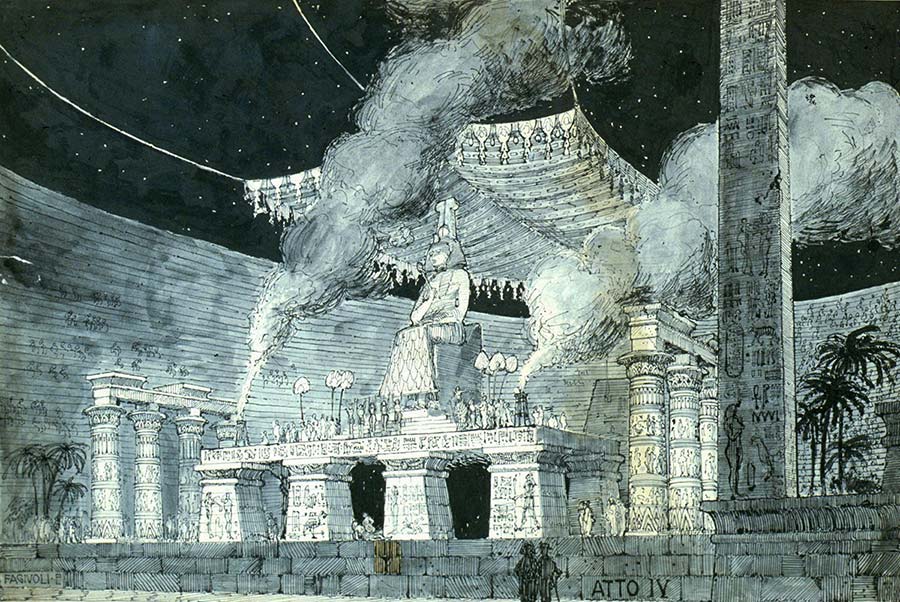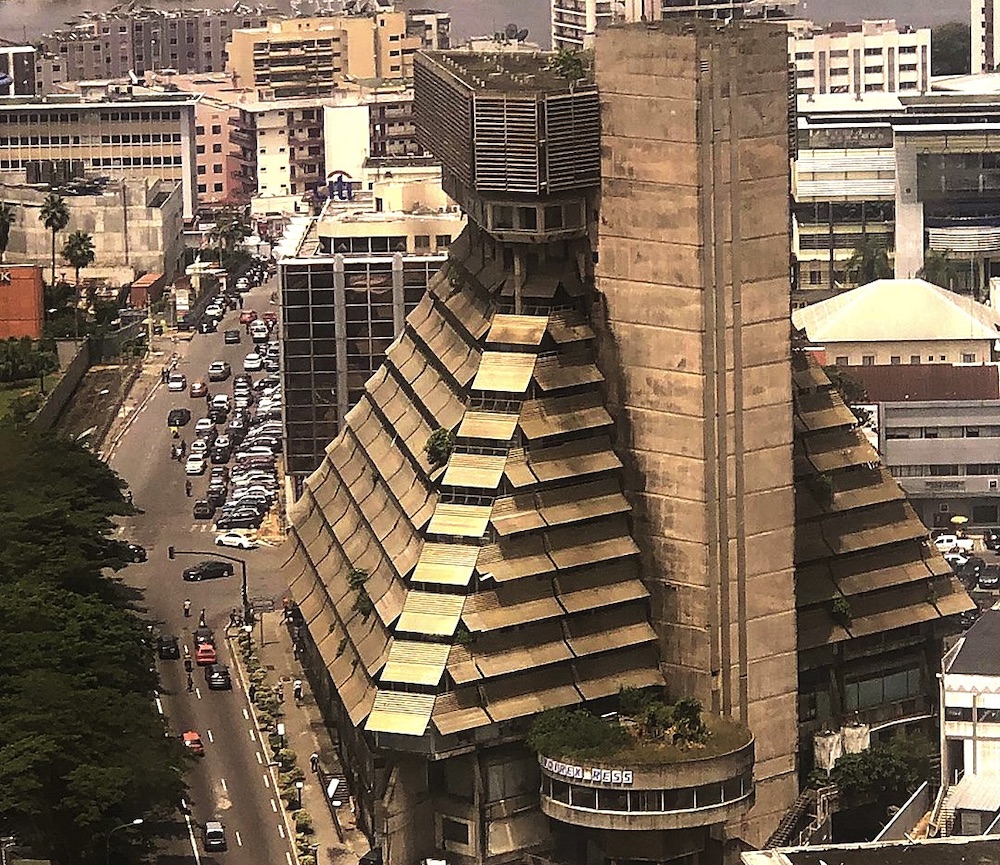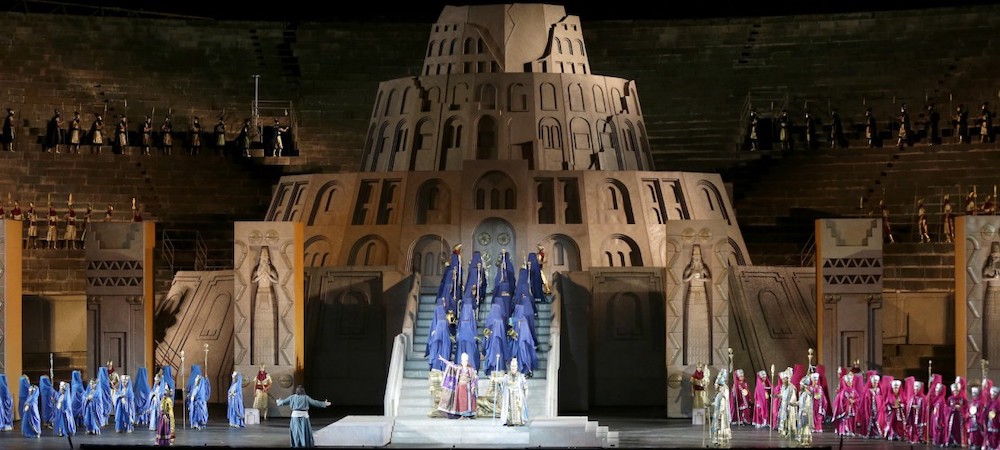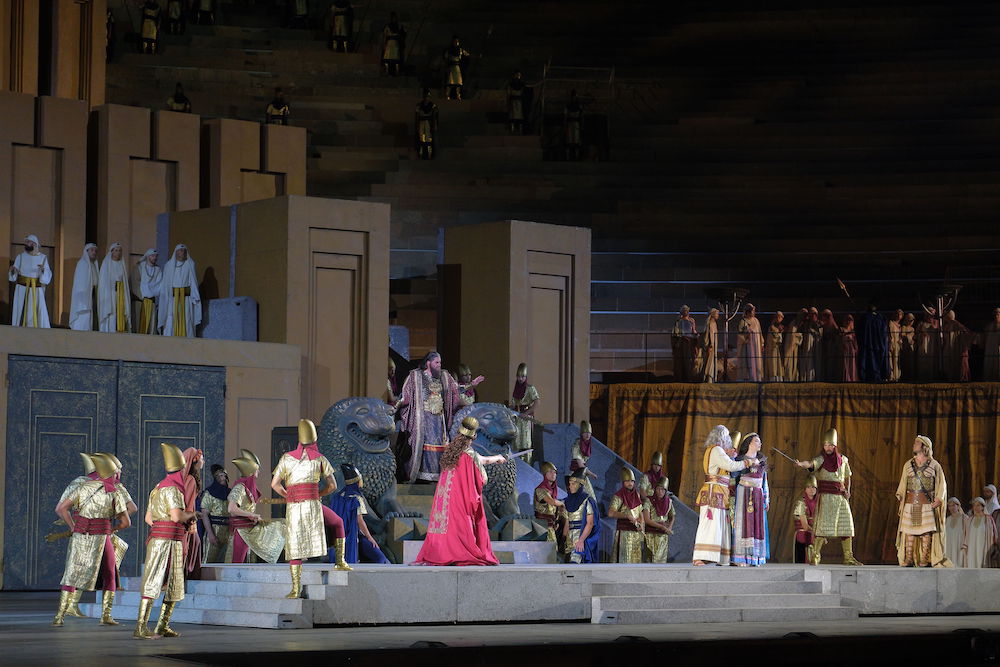The Arena di Verona has just hosted its 100th year of summer opera. Long ago the Arena had places for 30,000 Romans, now, with one-third of the monumental structure as an immense stage, it can — and often does — seat 15,000 spectators for opera.
Opera in the Arena di Verona is simply one of the wonders of the modern world.
This 2023 festival has seen 44 performances of 8 operas! It began with a new production of Verdi’s Aida by Italian stage director and choreographer/set, costume and lighting designer Stefano Poda (yes, he did it all ), reminding us that the very first opera mounted in the Arena was Aida, and that was in 1913, one hundred ten years ago (war and plague have interrupted continuity). There have been 749 more performances of Aida (though rain did stop 41 of them). Since 1980 each Festival season has included Verdi’s triumphal opera.
Legend has it that Veronese tenor Giovanni Zenatello (Pinkerton at the 1904 Butterfly world premiere) sometime in the early moments of the 20th century belted a few tones in the Arena, revealing its amazing, absolutely uncanny acoustic. Thus the Arena di Verona Aida was born! Veronese architect Ettore Fagiuoli (1884-1961) designed the sets for this first, 1913 Aida, setting a benchmark that has maybe been equaled, hardly surpassed!

In 1982 stage director/film director Gianfranco de Bosio (1924-2022) — superintendent of the Opera Festival di Verona from time to time in the 1980’s and 90’s, and set designer/architect Rinaldo Olivieri (1931-1998) — director of scenic installations at the Festival during some of these times, recreated the original 1913 Aida, a production that was last staged at the Arena in 2016.
The 1913 production boasts horses, but none of the usual elephants — Franco Zeffirelli (born in 1923 [!], died in 2019), famed for his lavish productions at the Arena (and elsewhere) famously replaced the horses and elephants of later Arena di Verona times with a ballet in his 2010 Aida.

As a filmmaker Gianfranco de Bosio is remembered for his 1963 Il terrorista, of interest because it lays bare the disparate elements of the Italian antifascist resistance. As an architect Rinaldo Olivieri is remembered for his famed Ivory Coast (Abidjan) brutalist building La Pyramide, now dilapidated and uninhabited. Both men had very distinguished careers at the Arena di Verona.

Verdi’s Nabucco (1841) established its composer as a major force in Italian opera. In Gianfranco de Bosio and Rinaldo Olivieri’s 1991 production Nabucco has now become the third most produced opera at the Arena di Verona, and this is precisely because Rinaldo Olivieri created a set of such massive dimension that the spectacle of the sets and its transformations are, in a word, absolutely awesome.
The Babylonian captivity attains a truly alive presence in their production (hundreds of Israelis standing and kneeling in front of the Babylonian gardens), making a portrayal of enslavement profoundly felt on an unprecedented scale. Its famed prayer of deliverance, “Va pensiero sull’ali donate” is softly sung, though massive in sound, in a profound stillness that palpably reverberates deeply in the hearts and souls of the 15,000 spectators who always join in for the immediate reprise of the prayer.
The program sheets, and massive annual catalogue of productions, credit the technicians of the theater right along with the Orchestra and Chorus of the Fondazione Arena di Verona. The transformation of the huge set pieces between the acts is a huge part of the show. For the Nabucco there are 20 or 30 set components that go together in very clever ways, seemingly magical as you watch an army of stage hands slowly moving them to new positions, then attaching them. Solomon’s temple, his Palace, the Hanging Gardens of Babylon not so suddenly, but indeed miraculously come together.
A first in my experiences at the Arena di Verona were the bright yellow hard hats atop the stagehands, adding great visual excitement to the set changes.

Every famous singer of the Italian repertory passes through the Arena di Verona, as does nearly every famous conductor. The musical level is high. Productions are staged so that little or no rehearsal is needed to exchange performers. In Nabucco (the opera I attended) over the four performances that were spaced days and weeks apart there were three different Nabuccos (lead photo is Luca Salsi as Nabucco), some of the other roles were taken for a single night only, and there were last minute substitutions of the originally announced cast.
As well as the star names that pop up throughout the season, there are myriad opportunities for the legions of fine singers who are the backbone of opera throughout the world. The level of singing is usually quite acceptable.
It is a given that some nights at the Arena are better than other nights. The performance I attended (August 17) vocally was not one of the better nights, though there were some fine performances.
Michael Milenski
Nabucco: Luca Salsi; Ismaele: Riccardo Rados; Zaccaria: Rafal Siwek; Abigaille: Maria José Sire; Fenena: Vasilisa Berzhanskaya. Il Grań Sacerdote: Gianfranco Montresor; Abdallo: Carlo Bosi; Anna: Elisabetta Zizzo. Orchestra, Coro and Tecnici della Fondazione Arena di Verona. Conductor: Alvise Casellati; Stage Director: Gianfranco de Bosio; Scenery: Rinaldo Olivieri.
Arena di Verona, August 17, 2023. Arena di Verona photos copyright EnneviFoto.